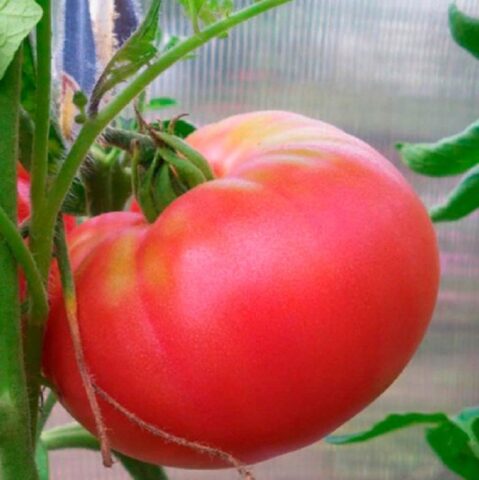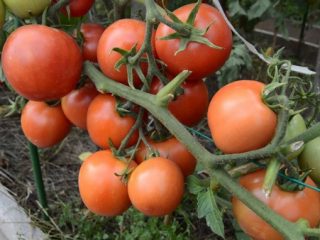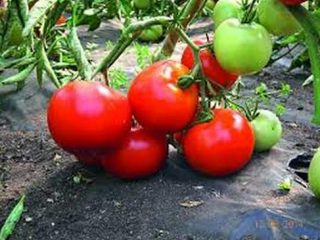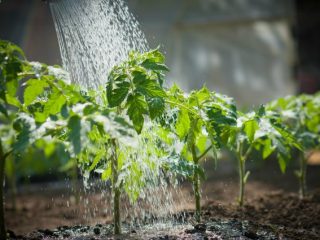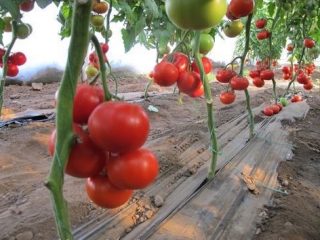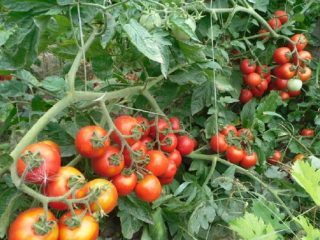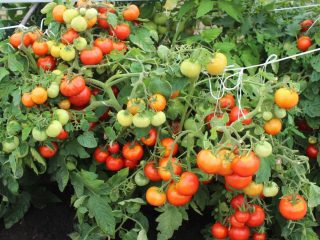Content
The Kolkhoz Queen tomato is a new product created in Russia. The variety is not yet widespread enough to be known to a wide range of vegetable growers. There is no planting material for mass sale; leading agricultural firms do not distribute it. The tomato is large-fruited, universal in terms of cultivation and use.
History of selection
The collective farm queen is a new collectible item from Russian breeders. Tomato is often confused with Kolkhoz, but these are different varieties that differ in the type of growth and color of tomatoes. The last fairly well-known red-fruited representative of the culture, planting material is freely available. Large agricultural companies distribute the seeds. The Kolkhoz Queen tomato is represented only by pink fruits. You can purchase it on the forum or from collectors.
Description of the tomato variety Kolkhoz Queen
The tomato is an early ripening, generative type, the ripening of the first fruits occurs 90-110 days after germination, belongs to the group of beef tomatoes. The bush is indeterminate, but with a limited growing point. The height of the stems differs depending on the cultivation method. In closed structures they are longer. The Kolkhoz Queen tomato is grown in the south in open ground, and in the temperate and continental zones - in a closed way.
This is not a hybrid, but a varietal form, so tomatoes are propagated by independently collected seeds. The germination of the material and the rooting of seedlings after transfer to the next place of growth is almost one hundred percent.
Description of the bush and fruits of the Kolkhoz Queen tomato:
- plant height – 180-200 cm with average shoot formation;
- form 1-2 stems, they are light brown in color, woody structure with small short pile and a slightly ribbed surface;
- side shoots are thin, green, formed in 1 piece. from leaf sinuses, they are removed immediately after appearance;
- the foliage is weak, the internodes are long, the leaves are compound, the plates are dark green with a corrugated surface and wavy edges;
- The root system is superficial, branched, the trunk circle is within 1.5 m.
- the lower fruit cluster is formed after the eighth leaf, the rest after three;
- the flowers are small, yellow, self-pollinating, each producing a viable ovary;
- large-fruited variety, weight of tomatoes - 250-400 g. When unloaded, the bunches grow to 600-800 g;
- tomatoes are oval, slightly compressed at the top and bottom. The surface is often uneven, ribbed at the base;
- fruits with a uniform dark pink color and thin skin;
- the pulp is juicy, dense, without hard white segments, contains four chambers;
- the seeds are light beige, large, few in number.
The taste is balanced relative to sugars and acids, with a weakly expressed nightshade aroma.
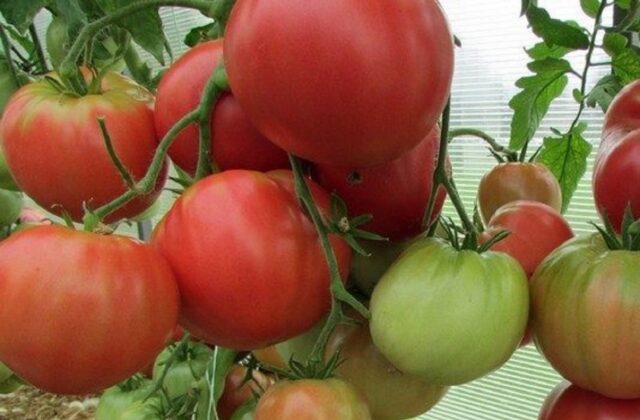
The fruit clusters of the variety are simple, with a density of up to eight ovaries
Characteristics of the tomato Kolkhoz Queen
The variety is characterized by poor drought resistance and requires constant moderate watering. When overwatered, the fruits crack. Uniform and earlier ripening of the Kolkhoz Queen tomato is possible with sufficient lighting. Special lamps are installed in greenhouses, and in open ground they are planted in a sunny area. Reacts calmly to lower temperatures, vegetation does not slow down at +10 0C.
Tomato yield Kolkhoz Queen
Fruiting is stable and does not depend on weather conditions. Tomato Kolkhoz Queen compact, 1m2 You can plant three plants. Productivity from 1m2 in an open area within 14 kg. In closed structures, the indicator is higher due to the height of the plant; 6-6.5 kg is taken from one bush.
The tomato ripens unevenly on the bunch. The collection of the first fruits begins in mid-July. After picking ripe tomatoes, the next ones ripen faster. Tomatoes of the last bunch in open ground reach biological ripeness in September, in greenhouses - two weeks earlier.
Resistance to diseases and pests
The Kolkhoz Queen tomato has good resistance to most infections that affect the crop.
The plant is not sick:
- mosaic of leaves;
- septoria;
- top rot;
- Alternaria blight;
- leaf curl.
The Kolkhoz Queen tomato has weak resistance to late blight and cladosporiosis.
When pests spread massively, the variety is affected in the same way as all representatives of Solanaceae.
Application area
Kolkhoz Queen is a salad variety; the nutritional value of the fruit is fully preserved when consumed fresh. Tomatoes are included in vegetable cuts, salads, and used as an addition to side dishes. The juiciness of the pulp allows them to be processed into juice, sauces or ketchup. Fruits of smaller weight are preserved whole.
Advantages and disadvantages of the Kolkhoz Queen tomato
The Collective Farm Queen has larger tomatoes on the second bunch than on the first, and the weight of the subsequent ones is practically the same in size. Large fruits cannot be used for whole-fruit canning. If the goal is harvesting for the winter, then the brushes are not thinned out.
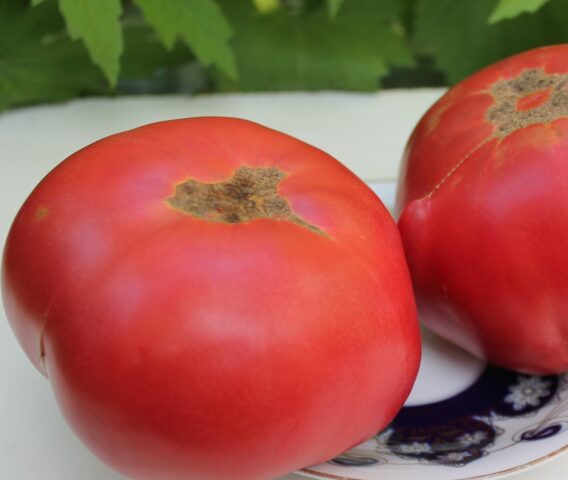
When part of the ovaries is removed, tomatoes grow up to 600 g
Pros:
- unpretentiousness;
- sets fruit even under the most unfavorable weather conditions;
- stable yield;
- high nutritional value;
- balanced taste;
- versatility in use;
- seeds are suitable for subsequent propagation;
- grown indoors and outdoors.
Minuses:
- poor resistance to cladosporiosis;
- the need to trim leaves when grown in greenhouses;
- prone to cracking in exhaust gas;
- transportable only when unripe;
- not suitable for long-term storage.
In order for tomatoes to meet the weight stated in the characteristics, constant feeding is necessary.
Features of planting and care
The early variety Kolkhoz Queen is grown as seedlings. Seeds are sown in March; material is placed on the bed at the age of 55-60 days.
How to grow seedlings:
- The container is filled with nutritious soil.
- The seeds are disinfected.
- The substrate is generously watered with a manganese solution.Leave for 10-12 hours.
- Make longitudinal furrows 2 cm deep. Seeds are distributed at intervals of 1 cm.
- Cover the container. When the tomatoes germinate, the material is removed.
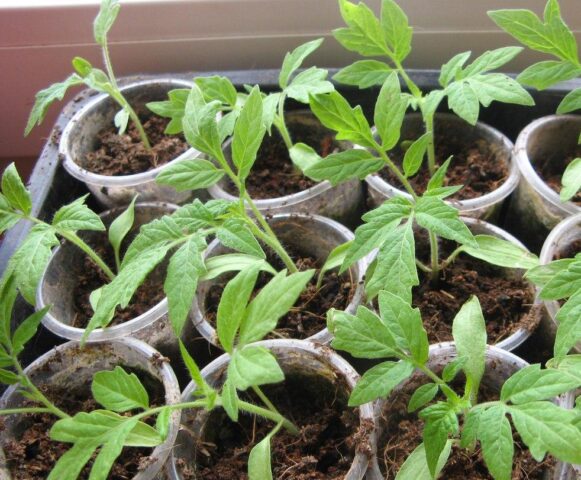
At the stage of three full leaves, tomatoes are planted in separate containers
They are assigned to the greenhouse in early May. Transfer to the ground when the soil warms up to +17 0C. The area is dug up and nitrogen is added. The holes are made in such a way as to deepen the seedlings to the lower leaves. Interval – 50-60 cm.
The agricultural technology of the Kolkhoz Queen tomato consists of the following activities:
- Loosen the soil and remove weeds as necessary.
- Water in the greenhouse every two days to prevent the root circle from drying out and water from stagnating. In open ground they rely on precipitation.
- Remove the stepsons, lower leaves, and fruit-bearing clusters.
- Fix the stems to the support.
- They are fed with organic matter and superphosphate in the spring, and phosphorus and potassium are given during fruit set. Throughout the entire ripening period, tomatoes are fertilized with liquid organic matter without limitation.
To minimize loosening, the Kolkhoz Queen tomato is hilled up and mulched.
Pest and disease control
In a greenhouse with high air humidity, cladosporiosis develops on the Kolkhoz Queen tomato. To prevent the spread of infection, it is recommended to cut off all leaves after the fruits have formed. Fungal spores can lie dormant in the soil or on tools for more than 5-7 years. Therefore, when a problem is detected, the root circle and equipment are treated with copper sulfate, and the tomato is treated with Fitosporin or Oxyx.
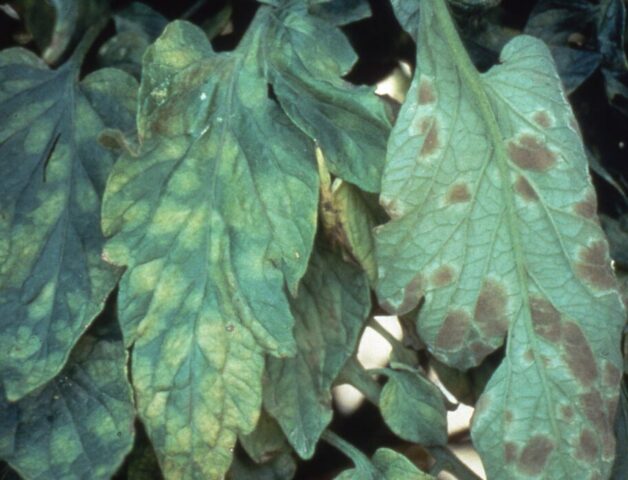
The disease is identified by brown spots on the green mass
In an open area, late blight infection is possible. The fungus affects the entire part of the bush.It begins to actively reproduce approximately in July, when the Kolkhoz Queen tomato has fully formed fruits.
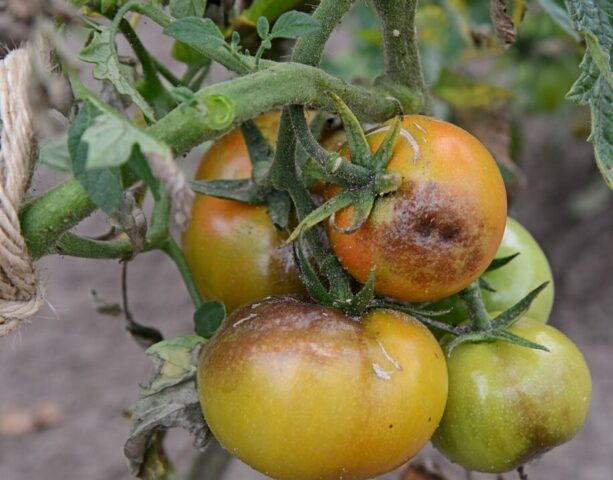
First, light brown areas appear on the tomatoes, then they begin to rot, the tomatoes become unsuitable for food.
Treat the seedlings after planting with copper sulfate. If brown spots are found on the leaves and stems, spray with Hom.
The most dangerous pest for tomatoes in a greenhouse is the whitefly.
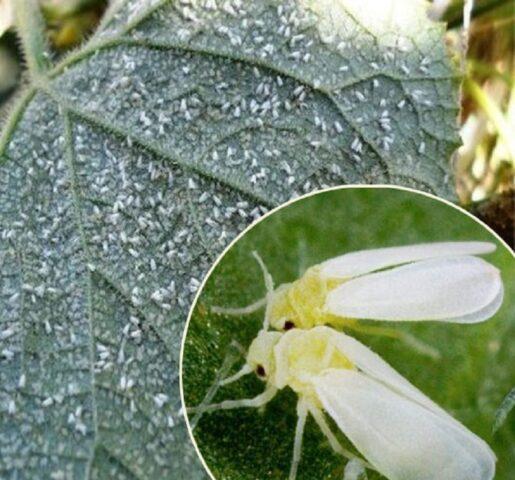
Getting rid of parasitic insects with “Commander”
In an open area, you can observe the spread of aphids.
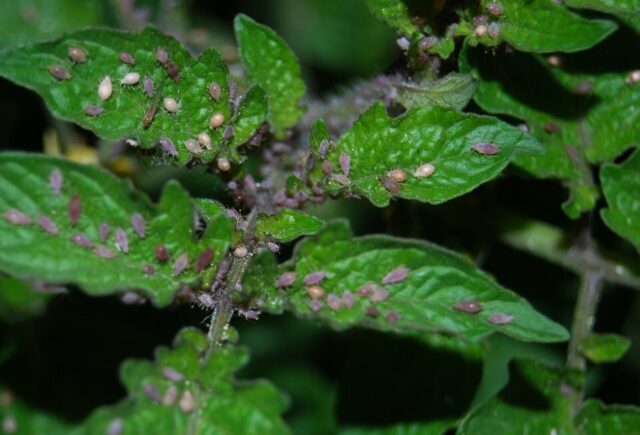
Getting rid of the pest "Iskra-Bio"
Conclusion
The Kolkhoz Queen tomato is a new large-fruited variety for growing in all climatic zones using closed and open methods. Plant with standard agricultural technology. Productivity is high, fruiting is stable and does not depend on weather factors.
Reviews from gardeners about the Kolkhoz Queen tomato
